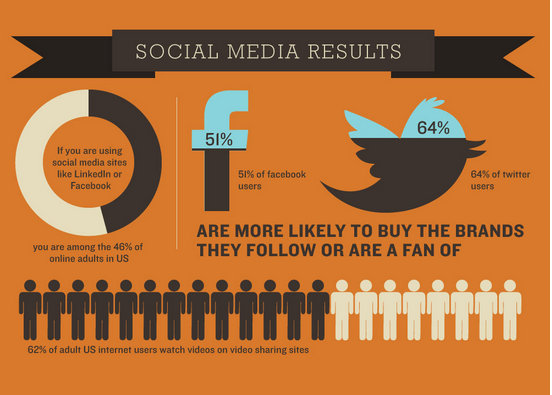Tracking Social Media ROI

Every serious marketer is interested in social media. This data and networking giant is a largely unexplored new frontier in the world of sales. There have been a few powerfully successful marketing efforts undertaken on a large scale, but many more unsuccessful attempts at leveraging personal connections and consumer behavior in order to drive ecommerce sales. This has led to a lot of mixed reactions and opinions of varying degrees on how best to approach social media marketing efforts.
However, the beta testing phase of social marketing has been going on for more than a decade now, and some best practices are beginning to emerge. Even more encouraging is the ability to track social media ROI metrics to glean potent insights as to the ways that social media users are interacting with companies and their sales funnels through gigantic networks such as Facebook, Twitter, Pinterest, or Tubmlir. These online communities are powerful resources for marketers looking to improve reach and attract traffic to their landing pages.

Up until recently, social networks were seen as interesting and potentially valuable avenues of advertising, but it wasn’t clear to what degree social media marketing was affecting an online store’s bottom line. But as with any other frontier, the longer interested parties were allowed to explore the possibilities, the more enlightening their insights became. Now there are in place, powerful and proven effective tactics to track social media ROI.
Today’s post is about finding out exactly how big the dividends your social marketing efforts are paying.
Tracking Social ROI has traditionally been a very difficult prospect for many marketers across myriad fields of sale. In general, there are a few important ROI metrics to track, and a few different useful tools that can help you in these efforts. Firstly, you need to find out what are some solid numbers that you can take a look through to determine your social marketing efficacy.
Now this type of engagement is a hopeful sign, but it isn’t the end of your ambitions. Now that you understand how far your reach can go, you need to take a look at how many people you can draw in.
The next set of social metrics is designed to measure exactly that: the people that are paying attention to you and spreading the word as well. This is the online equivalent of word of mouth advertising. Things like:
The next set of metrics you’ll want to track will help you segment the attention you’re getting between positive and negative lines. They say that there’s no such thing as bad publicity, but crazy celebrity recordings by the likes of Alec Baldwin, Christian Bale, and Mel Gibson disprove that theory fast, quick, and in a hurry.
It’s not quite so good for business if you have a serious piece of marketing content that’s getting negatively lampooned and then proceeds to virality. So to keep on top of any such shenanigans, you’ll need to start tracking all of the following:
You also need to be on as many of these social networks as you can manage, in order to expand your reach to as many disparate corners of the virtual space as possible. You, of course, need to maintain a presence on all of the major social networks:
Being able to quickly create and upload quality video content on YouTube is obviously very useful for the fact that you can easily distribute said content to all of your other social networks. Facebook has the largest potential for reaching new fans, and Twitter is arguably the fastest acting of the marketing vehicles. Pinterest is odd and I don’t understand it. But hey, with 12 million monthly visitors and a reputation for large initial bursts of traffic generated from marketing efforts, I’m probably the odd man out.
It’s all good to know what you should track, but it’s a bit more difficult to know how to go about all of the tracking. There are a lot of different tools available that specifically track and target these and other notable social media metrics, as well as some sneaky methods you can use to circumvent the usual channels of tracking. However, this is all the space we have for today, so join us later this week for part two of this post series on the different ways of tracking social media ROI.
However, the beta testing phase of social marketing has been going on for more than a decade now, and some best practices are beginning to emerge. Even more encouraging is the ability to track social media ROI metrics to glean potent insights as to the ways that social media users are interacting with companies and their sales funnels through gigantic networks such as Facebook, Twitter, Pinterest, or Tubmlir. These online communities are powerful resources for marketers looking to improve reach and attract traffic to their landing pages.

Up until recently, social networks were seen as interesting and potentially valuable avenues of advertising, but it wasn’t clear to what degree social media marketing was affecting an online store’s bottom line. But as with any other frontier, the longer interested parties were allowed to explore the possibilities, the more enlightening their insights became. Now there are in place, powerful and proven effective tactics to track social media ROI.
Today’s post is about finding out exactly how big the dividends your social marketing efforts are paying.
What to Track When Determining Social Media ROI

Tracking Social ROI has traditionally been a very difficult prospect for many marketers across myriad fields of sale. In general, there are a few important ROI metrics to track, and a few different useful tools that can help you in these efforts. Firstly, you need to find out what are some solid numbers that you can take a look through to determine your social marketing efficacy.
Social Media Marketing Metrics:
Ideally, you want to find out how your brand is perceived in a given community, obviously the applicable social metrics will differ across different platforms, but there are normally some numbers that are universal to a certain degree. Page Likes on Facebook for example, are roughly equivalent to Twitter Followers. Both of which are included in the first category of social media ROI metrics that you want to track. These numbers describe the amount of participation that your brand receives in a given online community. These can be things like:- Google+ likes
- YouTube Subscribers
- Pinterest Followers
- LinkedIn Followers
- And the aforementioned Facebook Likes/ Twitter Followers
Now this type of engagement is a hopeful sign, but it isn’t the end of your ambitions. Now that you understand how far your reach can go, you need to take a look at how many people you can draw in.
The next set of social metrics is designed to measure exactly that: the people that are paying attention to you and spreading the word as well. This is the online equivalent of word of mouth advertising. Things like:
- FB post likes and/or shares
- Pinterest Re-pins
- LinkedIn post likes and shares
- Tweets directly from your posted content
- Retweets
- YouTube video likes, shares, and number of embedded videos
The next set of metrics you’ll want to track will help you segment the attention you’re getting between positive and negative lines. They say that there’s no such thing as bad publicity, but crazy celebrity recordings by the likes of Alec Baldwin, Christian Bale, and Mel Gibson disprove that theory fast, quick, and in a hurry.
It’s not quite so good for business if you have a serious piece of marketing content that’s getting negatively lampooned and then proceeds to virality. So to keep on top of any such shenanigans, you’ll need to start tracking all of the following:
- Positive vs. negative Social Media Mentions.
- Number of hidden FB posts or negatively mentioned posts, which can easily be tracked on FB Insights.
- Further the efficacy of tracking mentions by grouping them on a monthly timeline in three categories: neutral, negative, and positive.
- Social conversions- these are the conversions your website receives as a direct result of social network traffic.
You also need to be on as many of these social networks as you can manage, in order to expand your reach to as many disparate corners of the virtual space as possible. You, of course, need to maintain a presence on all of the major social networks:
- YouTube
Being able to quickly create and upload quality video content on YouTube is obviously very useful for the fact that you can easily distribute said content to all of your other social networks. Facebook has the largest potential for reaching new fans, and Twitter is arguably the fastest acting of the marketing vehicles. Pinterest is odd and I don’t understand it. But hey, with 12 million monthly visitors and a reputation for large initial bursts of traffic generated from marketing efforts, I’m probably the odd man out.
It’s all good to know what you should track, but it’s a bit more difficult to know how to go about all of the tracking. There are a lot of different tools available that specifically track and target these and other notable social media metrics, as well as some sneaky methods you can use to circumvent the usual channels of tracking. However, this is all the space we have for today, so join us later this week for part two of this post series on the different ways of tracking social media ROI.














Comment(s)0